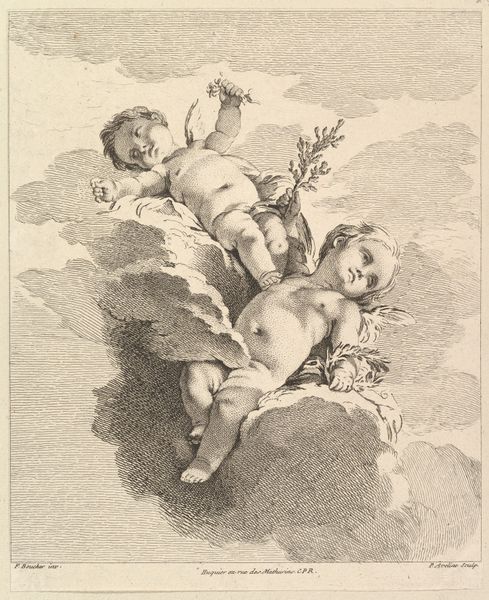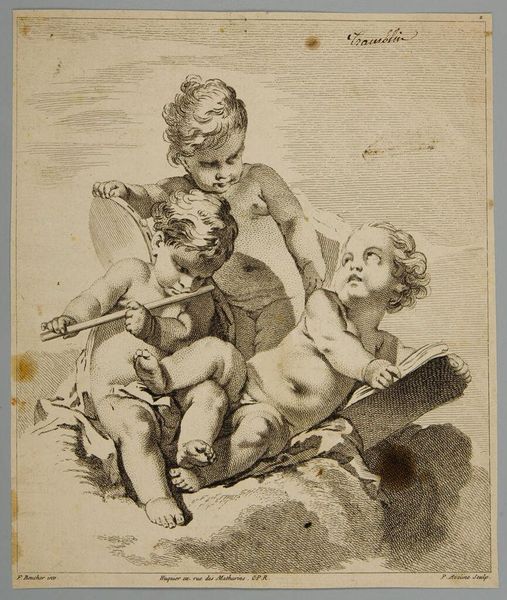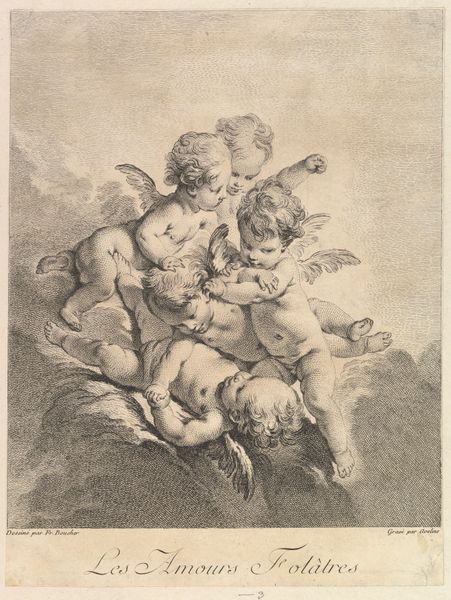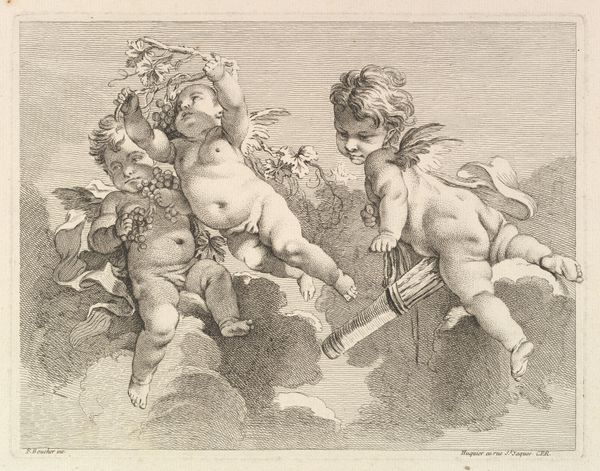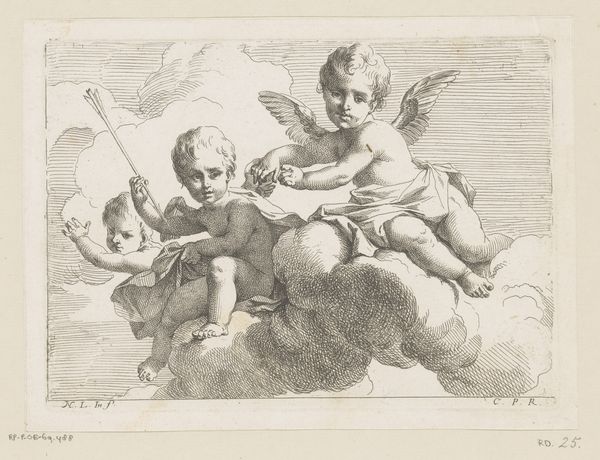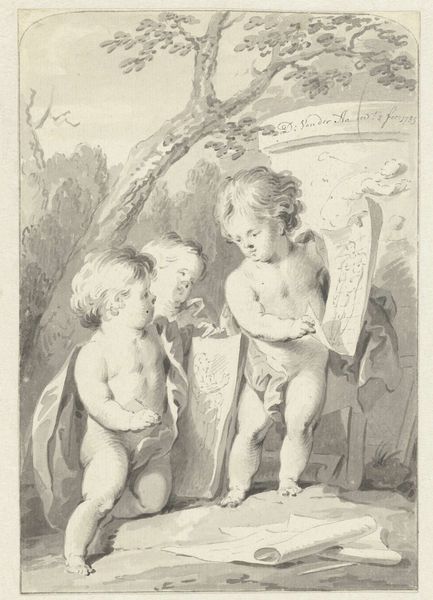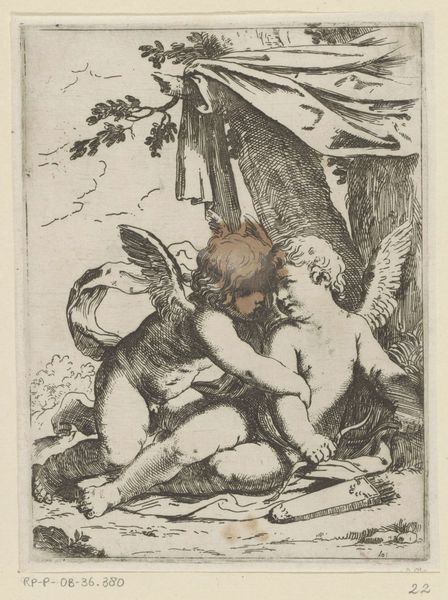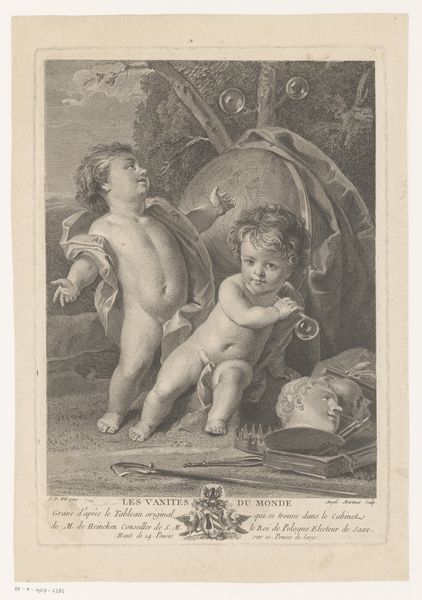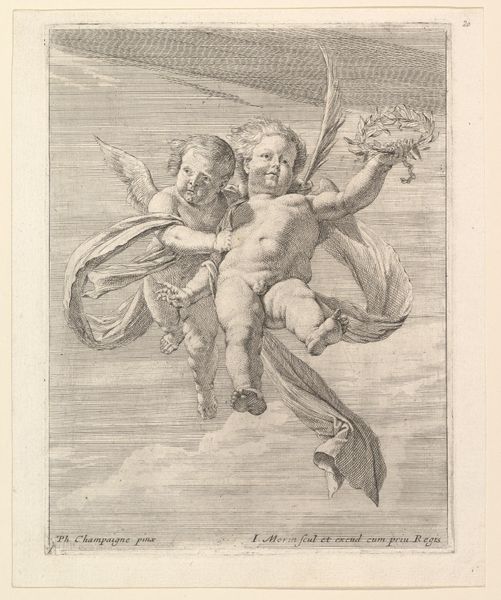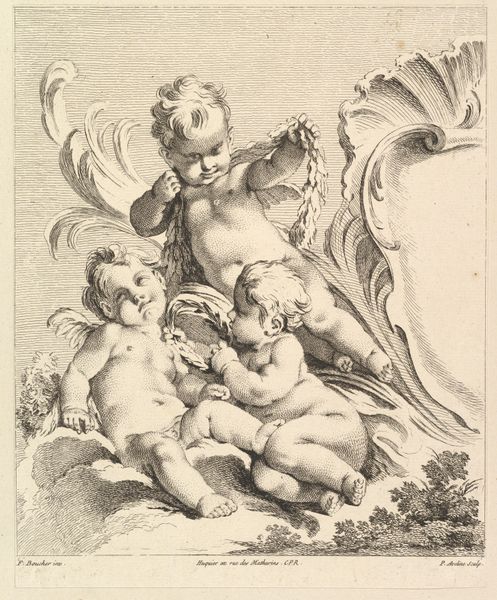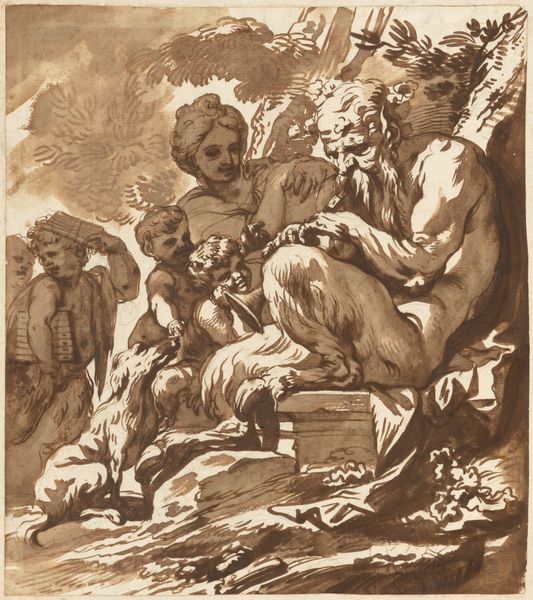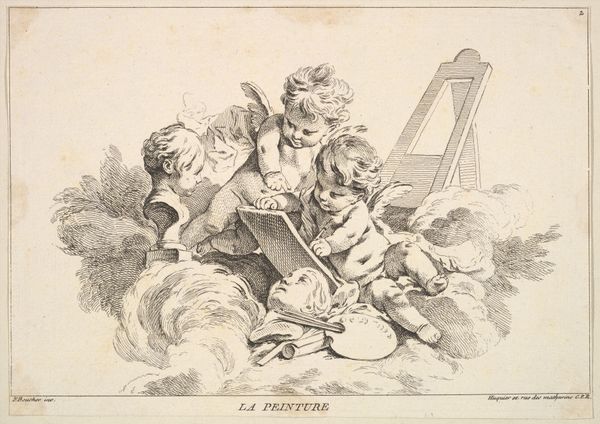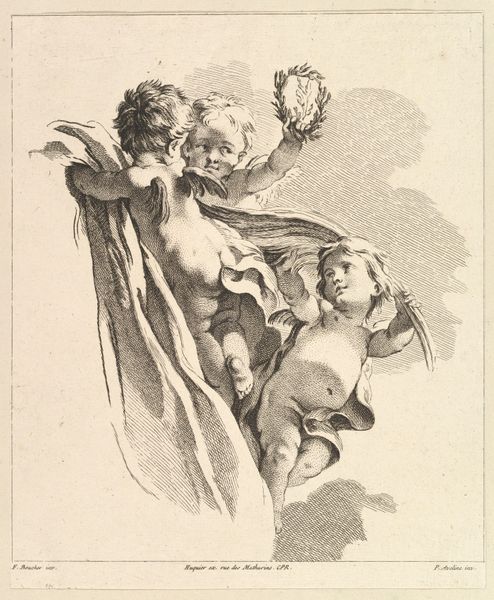
Three Loves with Musical Instruments 1727 - 1760
0:00
0:00
drawing, print, engraving
#
drawing
#
allegory
#
baroque
# print
#
figuration
#
child
#
group-portraits
#
genre-painting
#
academic-art
#
engraving
#
miniature
#
rococo
Dimensions: Sheet: 10 7/16 x 8 1/2 in. (26.5 x 21.6 cm)
Copyright: Public Domain
Curator: Before us we have Pierre Alexandre Aveline's print, dating roughly from 1727 to 1760, titled "Three Loves with Musical Instruments." It is held at the Metropolitan Museum of Art. What are your initial thoughts? Editor: My first impression is of incredible delicacy. The figures almost seem to float off the page, emphasized by the ethereal quality of the engraving. It makes you consider the material of the page. Curator: Absolutely. Aveline uses those delicate lines to convey more than just form. Think about the three cherubs depicted. Each engaged in musical pursuit represents different facets of love—harmony, rhythm, lyricism, perhaps. How the music brings love alive in different aspects and relationships of it. Editor: The composition intrigues me. The varying tonal qualities Aveline was able to wring from a copper plate! How long did it take to render the figures’ skin in all those tonal gradations through this kind of printmaking process? Was this artist from an academic tradition? Curator: He operated in the Rococo, a moment of theatrical display that can even make the cherubs appear to be miniature operatic singers, performing love’s symphony, the musical attributes giving depth to the theme, rooted in tradition. These iconographies can often reinforce established worldviews, but here there seems to be room for individual interpretation as to what music does to enhance love. Editor: That reference to opera made me realize it does speak to a larger world of display. Beyond the visual, could there be an aspirational element here? Who could afford such meticulously crafted prints at the time, and what statement did owning it make about them and about artistic patronage? The layers of meaning multiply! Curator: I concur. It invites a meditation on how art, love, and society intertwine. This was made possible by these means of productions and their dissemination during this time. It makes you think of the intersection between image and emotion. Editor: I will certainly consider Aveline’s work with new perspectives now. It seems we have revealed new facets of production through to cultural memory, both with considerable depth.
Comments
No comments
Be the first to comment and join the conversation on the ultimate creative platform.
